- 过滤器
Vue.js 允许你自定义过滤器,可用作为一些常用的文本化,过滤器可以用在这个地方:mustache 抓值 和 v-bind 表达式。过滤器应该被添加在JavaScript 表达式的尾部,由**“管道”** 符指示。
1.html 元素
<td>{{item.ctim | dataFormat('yyyy-mm-dd')}}</td>
-----------------------------------------------
//Vue.filter('过滤器的名称',function(data){})
过滤器的语法,过滤器中,function 的第一个参数是规定死的,永远是 管道符(|) 前面传递过来的数据
//Vue.filter(‘过滤器的名称’,function(data){})
过滤器可以链式调用、
<div>{{ms | reget('你的')}}</div>
--------------------------------------
Vue.filter('reget',function(msg,repace){
//字符串的replace 方法,第一个参数,除了可写一个字符串之外,还可以定义正则
return msg.replace(/单纯/g,repace);
})
– 全局过滤器:
Vue.filter('dateFormat',function(dataStr){
//根据设定的时间字符串,得到特定的时间
var dt = new Date(dataStr);
var y = dt.getFullYear();
var m = dt.getMonth()+1;
var d = dt.getDate();
var h = dt.getHours();
var mm = dt.getMinutes();
var s = dt.getSeconds();
var ss = dt.getMilliseconds();
return `${y}-${m}-${d} ${h}:${mm}:${s}:${ss}`; //刀秋符号
})
– 私有过滤器
methods:{
add(){
this.list.push({id:this.id,name:this.name,ctime:new Date()})
this.name = this.id = '';
},
del(id){
//找到数组中的所引,直接调用数组的splice 方法
/*this.list.some(
(item,i)=>{
if(item.id == id ){
this.list.splice(i,1);
//数组的some 方法返回true 相当于 breake;
return true;
}
}
)*/
var index = this.list.findIndex(
item=>{
if(item.id==id){
return true;
}
}
)
this.list.splice(index,1);
},
serchKey(searchKey){
return this.list.filter(
item =>{
if(item.name.includes(searchKey) || searchKey =='')
{
return item;
}
}
)
}
},
filters:{
//自定义私有过滤器,过滤器名字,+ 函数名称
dateFormat: function(dataStr){
//根据设定的时间字符串,得到特定的时间
var dt = new Date(dataStr);
var y = dt.getFullYear();
var m = dt.getMonth()+1;
var d = dt.getDate();
var h = dt.getHours();
var mm = dt.getMinutes();
var s = dt.getSeconds();
var ss = dt.getMilliseconds();
return `${y}-${m}-${d} ${h}:${mm}:${s}`; //刀秋符号
}
}
- String.padStart(args1,args2)
padStart:返回新的字符串,表示用参数字符串从头部补全原字符串。
padEnd:返回新的字符串,表示用参数字符串从头部补全原字符串。
以上两个方法接受两个参数,第一个参数是指定生成的字符串的最小长度,第二个参数是用来补全的字符串。如果没有指定第二个参数,默认用空格填充。
filters:{
//自定义私有过滤器,过滤器名字,+ 函数名称
dateFormat: function(dataStr){
//根据设定的时间字符串,得到特定的时间
var dt = new Date(dataStr);
var y = dt.getFullYear();
var m = (dt.getMonth()+1).toString().padStart(2,'0');
var d = dt.getDate().toString().padStart(2,'0');
var h = dt.getHours().toString().padStart(2,'0');
var mm = dt.getMinutes().toString().padStart(2,'0');
var s = dt.getSeconds().toString().padStart(2,'0');
var ss = dt.getMilliseconds().toString().padStart(3,'0');
return `${y}-${m}-${d} ${h}:${mm}:${s}:${ss}`; //刀秋符号
}
}
- 自定义按键修饰符:
- 自定义全局按键修饰符
- //自定义全局按键修饰符
//自定义全局按键修饰符
Vue.config.keyCodes.f2 = 113;
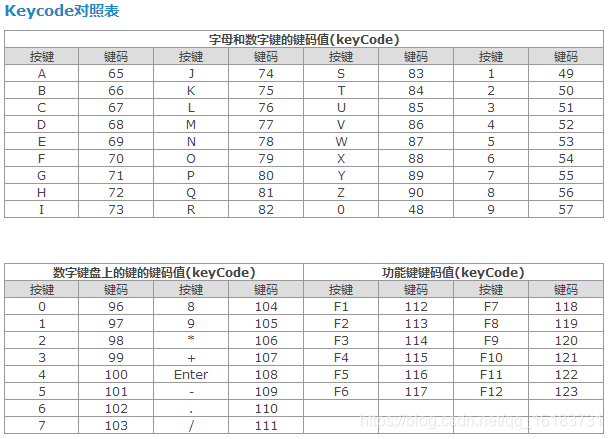
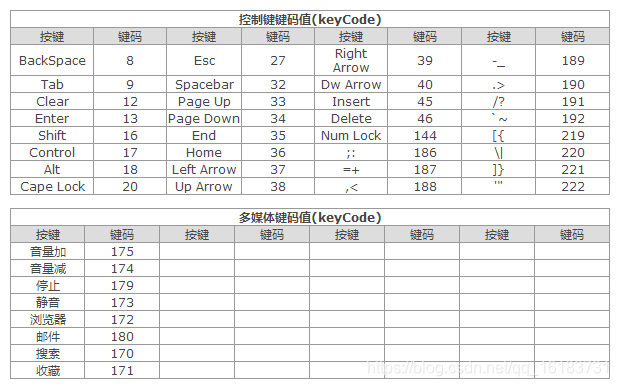
<input type="text" v-model="id" class="form-control" v-color/>
----------------------------------
//自定一 设置字体的颜色 指令
Vue.directive('color',{
//样式,只要通过指令绑定给了元素,不管这个元素有没有插入到页面中,这个元素肯定有一个内联的样式
//将来元素肯定会显示到页面中,这时候,浏览器的渲染引擎必然会解析样式,应用给这个元素
bind:function(el){
el.style.color = 'red';
//和样式相关的操作在 bind 中执行
}
})
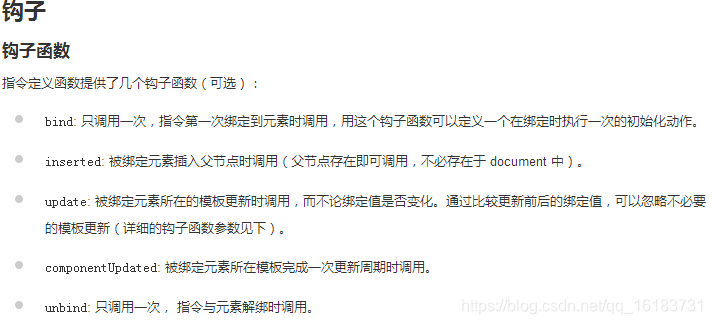
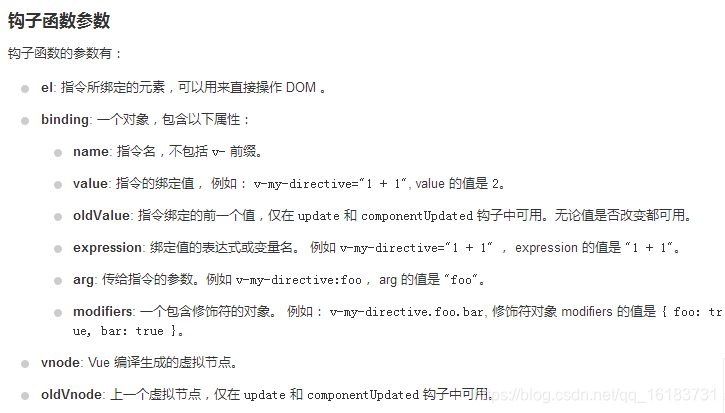
//按键抬起,触发事件
<input type="text" class="form-control" v-model="name" @keyup.enter="add"/>
-----------------------------
<input type="text" class="form-control" v-model="name" @keyup.f2="add"/>
- 定义全局指令 Vue.directive()
//使用:Vue.directive 定义全局的指令,v-focus
其中:
参数1,-----指令的名称,注意定义时,指令的名称前面,不需要加 v- 前缀,但是调用是必须加 v- 前缀调用.
参数2:---- 是一个对象,在这个对象身上,有一些指令相关的函数,这些函数可以在特定的阶段,执行相关的操作
<input type="text" v-model="id" class="form-control" v-color="'blue'"/>
--------------------------------------------
//使用:Vue.directive 定义全局的指令,v-focus
/*其中:参数1,指令的名称,注意定义时,指令的名称前面,不需要加 v- 前缀
但是调用是必须加 v- 前缀调用
参数2: 是一个对象,在这个对象身上,有一些指令相关的函数,这些函数可以在特定的阶段,执行相关的操作*/
Vue.directive('focus',{
bind:function(el){//每当指令绑定到元素上的时候,立即执行这个bind 函数,只执行一次
//注意这个函数中,第一个参数,永远是el,表示 被绑定了指令的那个元素,这个el 参数,是一个原生的js对象
/*在元素刚绑定了指令的时候,还没有,插入到DOM 中,这时候,调用focus 方法没有作用
因为只有,一个元素植入DOM之后,才能获取焦点*/
el.focus()
},
inserted:function(el){
// 和Js 行为相关的操作,最好在inserted 中去执行,放置js 行为不生效
},
updated:function(el){
}
})
//自定一 设置字体的颜色 指令
Vue.directive('color',{
//样式,只要通过指令绑定给了元素,不管这个元素有没有插入到页面中,这个元素肯定有一个内联的样式
//将来元素肯定会显示到页面中,这时候,浏览器的渲染引擎必然会解析样式,应用给这个元素
bind:function(el,binding){
el.style.color = binding.value;
//和样式相关的操作在 bind 中执行
}
})
- 自定义私有指令
函数简写:
大多数情况下,我们可能想在 bind 和 update 钩子上的重复动作,并且不关心其他钩子函数。
<td v-color="'yellow'">{{item.ctime | dateFormat }}</td>
-------------
directives:{
//自定义私有指令
'color':{
bind: function(el,binding){
el.style.color = binding.value;
}
},
'font':function(el,binding){//注意这个function 等同于 把代码 写到 bind 和 update 中
el.style.fontSize=binding.value;
}
}
- Vue 实例的声明周期
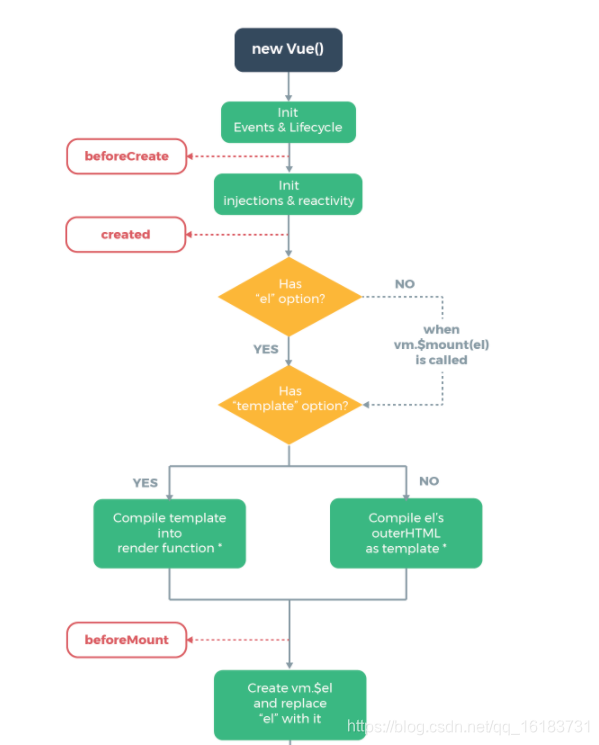
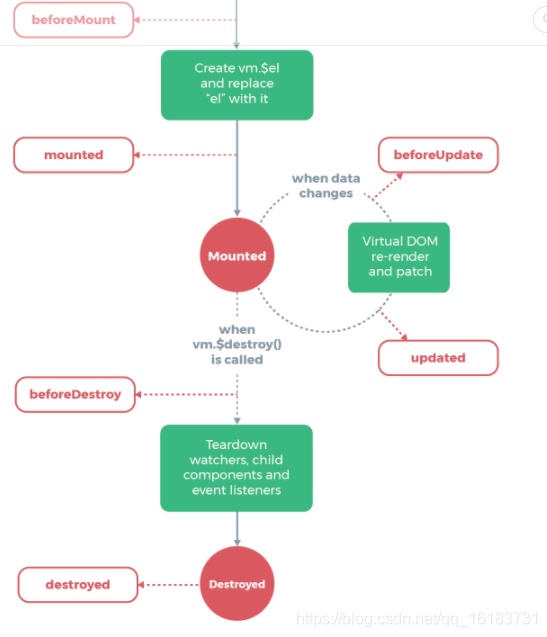
directives:{
//自定义私有指令
'color':{
bind: function(el,binding){
el.style.color = binding.value;
}
},
'font':function(el,binding){//注意这个function 等同于 把代码 写到 bind 和 update 中
el.style.fontSize=binding.value;
}
},
beforeCreate(){
//注意,在beforeCreate 第一个生命周期函数执行的时候,data 和 methods 中数据肯定没有初始化
},
created(){//第二个生命周期函数
//注意在created 中data 和 methods 都已经初始化好了
//如果调用methods 中的方法,或者操作 data 中的数据,最早只能在created 中操作
},
beforeMount(){//第三个生命周期函数
//注意:表示,模板已经在内存中编辑完成了,但尚未把模板渲染到页面中
//在 这个函数执行的时候,页面中的元素,还没有被真正替换过来,只是之前写的一些模板字符串
},
mounted(){//第四个生命周期函数
//执行完mounted 函数表示 实例已经完全创建好,在内存中了
},
//运行中的了两个事件
beforeUpdate(){
//页面中显示的数据,还是旧的,此时 data 数据是最新的,页面尚未知,最新的数据保持同步
},
updated(){
//页面和data中的数据都是最新的
}
- vue-resource 实现 get post ,jsonp 请求
还可以使用 ‘axics’ 的第三方实现数据的请求
你可以使用全局对象方式 Vue.http 或者在一个 Vue 实例的内部使用 this.$http来发起 HTTP 请求。
// 基于全局Vue对象使用http
Vue.http.get('/someUrl', [options]).then(successCallback, errorCallback);
Vue.http.post('/someUrl', [body], [options]).then(successCallback, errorCallback);
// 在一个Vue实例内使用$http
this.$http.get('/someUrl', [options]).then(successCallback, errorCallback);
this.$http.post('/someUrl', [body], [options]).then(successCallback, errorCallback);
---- vue-resource 提供了 7 种请求 API(REST 风格):
get(url, [options])
head(url, [options])
delete(url, [options])
jsonp(url, [options])
post(url, [body], [options])
put(url, [body], [options])
patch(url, [body], [options])
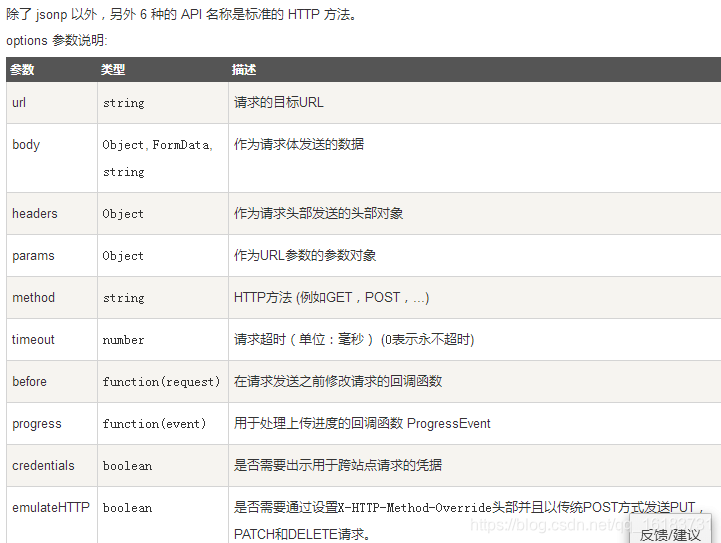

//实现get post jsonp请求
var get = new Vue({
el:'#get',
data:{
},
methods:{
get(){//发起get请求
//当发起get 请求后,使用 .then 来设置成功的回调函数
this.$http.get('https://www.baidu.com/').then(
function(result){
/*result.body 成功后返回的数据*/
console.log(result);
}
)
},
post(){//发起 post 请求 application/x-www-form-urlencoded
//手动post请求默认,默认没有表单格式,所以服务器处理不了
//通过post 方法的第三个参数,设置提交的内容类型,为普通的表单数据格式
this.$http.post(
'https://www.baidu.com/',{},{emulateJSON:true}
).then(result=>{
console.log(result.body)
})
},
jsonp(){//发起jsonp 请求
this.$http.jsonp('localhost:8080/index').then(
result=>{
console.log(result.body)
}
)
}
}
})








 本文深入探讨Vue.js的高级特性,包括自定义过滤器、全局与私有过滤器的使用,自定义指令与按键修饰符的实现,以及如何利用Vue-resource进行GET、POST和JSONP请求。同时,介绍了Vue实例的生命周期,帮助开发者更好地理解组件的运行过程。
本文深入探讨Vue.js的高级特性,包括自定义过滤器、全局与私有过滤器的使用,自定义指令与按键修饰符的实现,以及如何利用Vue-resource进行GET、POST和JSONP请求。同时,介绍了Vue实例的生命周期,帮助开发者更好地理解组件的运行过程。

















 被折叠的 条评论
为什么被折叠?
被折叠的 条评论
为什么被折叠?








